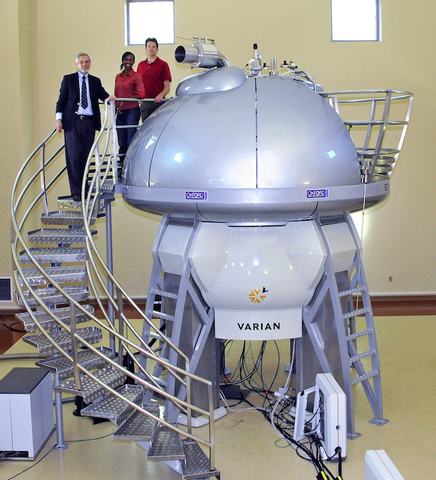August 28, 2014
A giant in a molecular realm

Understanding how viruses and bacteria communicate as they invade cells – and how drugs should attach to molecules to fight these invaders – requires extraordinary views of life’s building blocks.
One of the world’s leaders in providing and interpreting these views is GRA Eminent Scholar Jim Prestegard. He is an expert in using powerful technology to render 3-D images of proteins, complex carbohydrates and other compounds – images that reveal their structure and function and provide the knowledge needed to guide future exploration.
Prestegard announced his retirement this summer as a professor at the University of Georgia. While free from teaching and administration, he remains in charge of one of the world’s most powerful nuclear magnetic resonance spectrometers – a colossal 900 MHz instrument – housed in UGA’s Complex Carbohydrate Research Center (CCRC). There, he will continue to pursue new insights into molecular compounds, including the mysterious sugars that live on the surface of cells.
“I still have funded research underway,” he says, “and now I have the opportunity to be more personally involved in the lab, which I love.”
Prestegard is something of a lynchpin scientist in that he plays a pivotal role in others’ research. In his 16 years at UGA, he broke new ground in NMR spectroscopy by advancing new ways to measure the structure of compounds – contributions that enabled other scientists to make big strides in their own research.
“We interact with a number of scientists on their [research] problems, and we do a lot of training,” he says. “The way we collaborate, very often, is to encourage an outside scientist or post-doc to come here and learn. They may continue to use the NMR here, but they become independent in analyzing the data.”
An example he shares is a collaborative effort with a UC-San Diego research team investigating how the body defends itself against infectious agents. Prestegard’s insights into the properties of certain molecules helped shed light on how they guide immune cells toward infection. As with so many other studies, at UGA and beyond, his contribution played a pivotal role in expanding the boundaries of research.
Prestegard’s storied career has roots in his home state of Minnesota. His father was a tool-and-die maker employed with Ford in Minneapolis, and young Jim was awarded a full-ride Ford Motor Company Fund scholarship to the university of his choice. He chose nearby University of Minnesota, majored in chemistry and became the first in his family to earn a college degree.
While introduced to NMR technology as an undergrad, Prestegard immersed himself in this technology at Cal Tech, where he pursued his Ph.D. under the renowned chemist Sunney Chan. He planned to do post-doc study, “but after completing my program, Sunny warned me that the economy was going to get bad. He suggested I apply for permanent positions and take an offer if I get it.” He did just that in 1970, when Yale University came calling.
Prestegard worked at Yale for the next 27 years. He wasn’t looking to leave when approached in the late 1990s by Peter Albersheim and Alan Darvill of the CCRC. But he appreciated their focus and intent on making UGA a leader in this specialized area of research.
“Jim was actually on our steering committee for one of our large interdisciplinary grants,” recalls Alan Darvill, director of the center. “He visited us here at CCRC a couple of times, and we were really, really impressed. We were looking to hire in glycobiology and NMR, and it was an obvious question to ask.”
The Georgia Research Alliance factored into the conversation – GRA had already invested in an 800 MHz NMR spectrometer for the center, and Jim arrived as a newly minted GRA Eminent Scholar. Shortly thereafter, NIH announced a program to fund research at four sites with 900 MHz spectrometers – an instrument significantly more powerful than the 800 MHz – and GRA was again a catalyst for UGA being selected as one of the four sites.
“That proved to be very beneficial for Georgia,” Prestegard says, ‘because the higher the frequency at which these operate, the larger and more complex systems you can study.”
While instrumentation is certainly critical, the minds behind it matter most. For UGA, Georgia and modern science, Jim Prestegard has been one of the minds that helped influence many courses of exploration. And although he’s retiring from one post, he’ll continue pushing the frontiers of science as a GRA Eminent Scholar.
